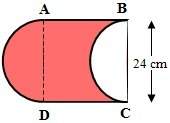
Mathematics, 09.09.2019 17:20, bri9263
You are conducting a study of students doing work-study jobs on your campus. among the questions on the survey instrument are the following. a. how many hours are you scheduled to work each week? answer to the nearest hour. b. how applicable is this work experience to your future employment goals? respond using the following scale: 1= not at all, 2 = somewhat, 3 = very (a) suppose you take random samples from the following groups: freshmen, sophomores, juniors, and seniors. what kind of sampling technique are you using (simple random, stratified, systematic, cluster, multistage, convenience)? simple random sample multistage sample systematic sample cluster sample convenience sample stratified sample (b) describe the individuals of this study. students on all campuses with work-study jobs. students on your campus. students on all campuses. students on your campus with work-study jobs. (c) what is the variable for question a? type of job total hours worked number of students who work hours scheduled classify the variable as qualitative or quantitative. both qualitative and quantitative quantitative qualitative neither quantitative nor qualitative what is the level of measurement? ratio nominal ordinal interval (d) what is the variable for question b? hours scheduled rating of satisfaction of work experience for future employment number of students who work rating of applicability of work experience to future employment classify the variable as qualitative or quantitative. qualitative both qualitative and quantitative quantitative neither quantitative nor qualitative what is the level of measurement? ordinal ratio nominal interval (e) is the proportion of responses "3 = very" to question b a statistic or a parameter? neither a statistic nor a parameter both a parameter and a statistic parameter statistic (f) suppose only 40% of the students you selected for the sample respond. what is the nonresponse rate? % do you think the nonresponse rate might introduce bias into the study? explain. yes, the people choosing to respond may have some characteristics that would bias the study. no, the people choosing to respond probably don't have characteristics that would bias the study. no, the people choosing not to respond probably don't have characteristics that would bias the study. yes, the people choosing not to respond may have some characteristics that would bias the study. (g) would it be appropriate to generalize the results of your study to all work-study students in the nation? explain. yes, the sample is random so the results can be applied anywhere. no, the sample frame is restricted to one campus. no, results only apply to the students sampled. yes, the sample frame is for all campuses.

Answers: 2
Other questions on the subject: Mathematics

Mathematics, 21.06.2019 13:10, mountassarhajar2008
Identify whether the figure has plane symmetry, symmetry about an axis, or neither.
Answers: 1

Mathematics, 21.06.2019 18:00, TGJuuzouSuzuya
!! 10 ! a westbound jet leaves central airport traveling 635 miles per hour. at the same time, an eastbound plane departs at 325 miles per hour. in how many hours will the planes be 1900 miles apart?
Answers: 1

Mathematics, 21.06.2019 20:00, 4804397217
A. what does the point (4, 122) represent? b. what is the unit rate? c. what is the cost of buying 10 tickets?
Answers: 2

Mathematics, 21.06.2019 23:00, britann4256
Calculate the average rate of change over the interval [1, 3] for the following function. f(x)=4(5)^x a. -260 b. 260 c. 240 d. -240
Answers: 1
Do you know the correct answer?
You are conducting a study of students doing work-study jobs on your campus. among the questions on...
Questions in other subjects:

Mathematics, 23.03.2021 07:30



Mathematics, 23.03.2021 07:30


History, 23.03.2021 07:40




Computers and Technology, 23.03.2021 07:40







